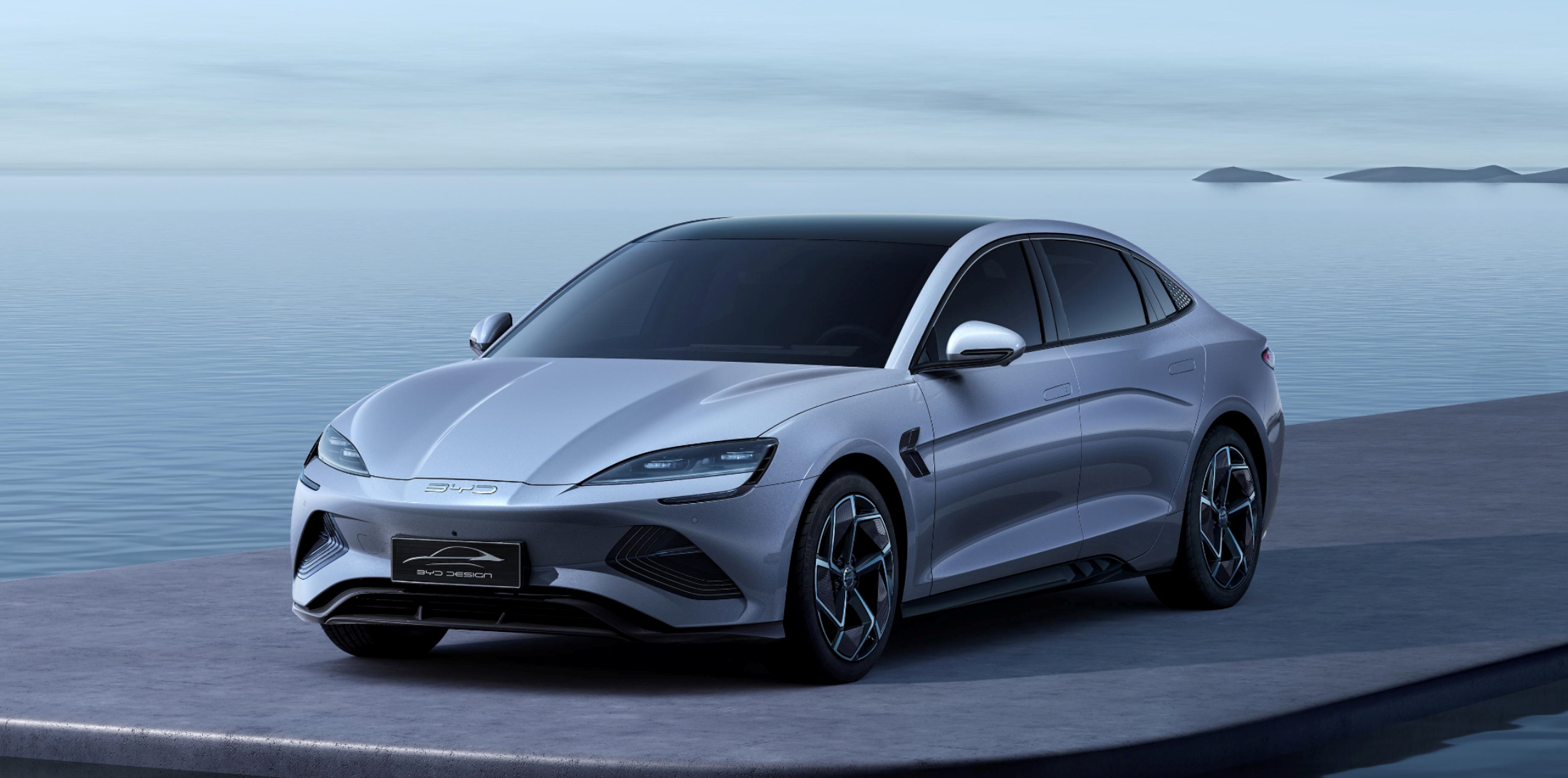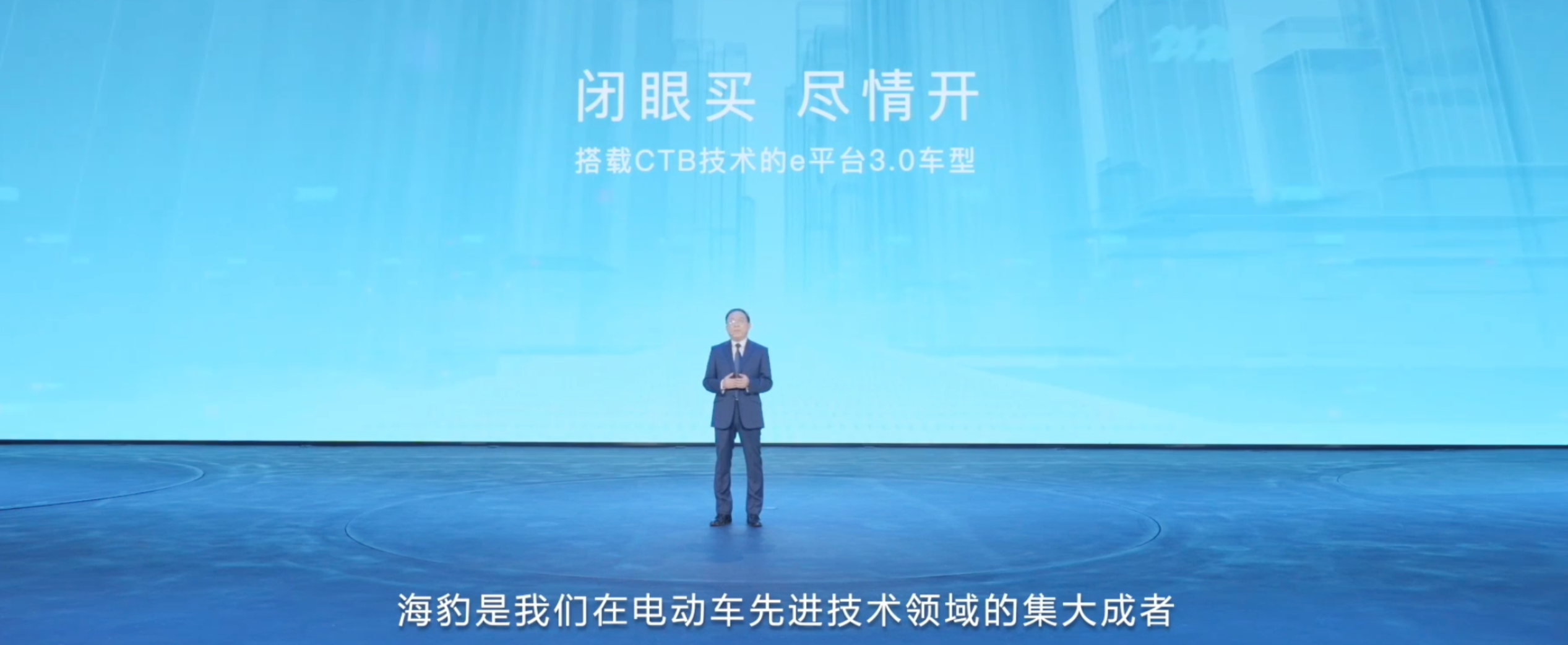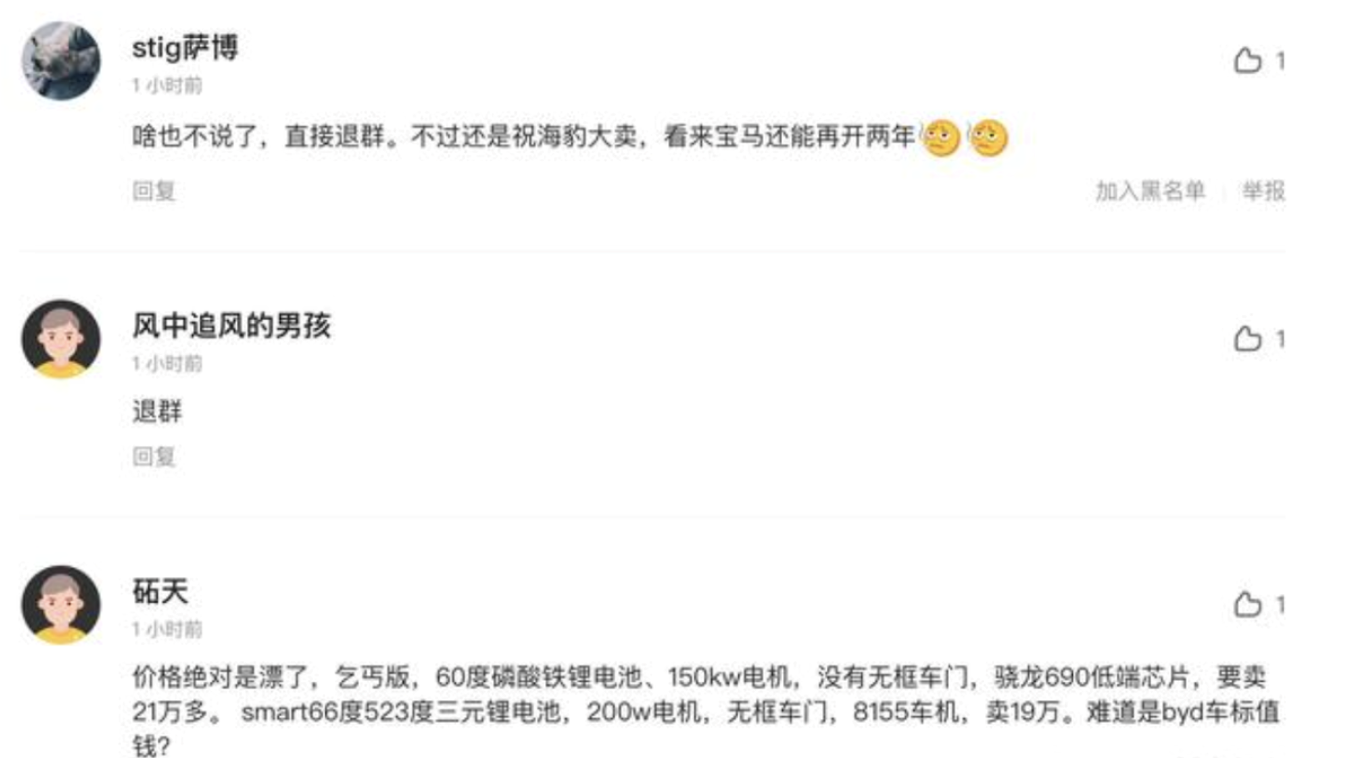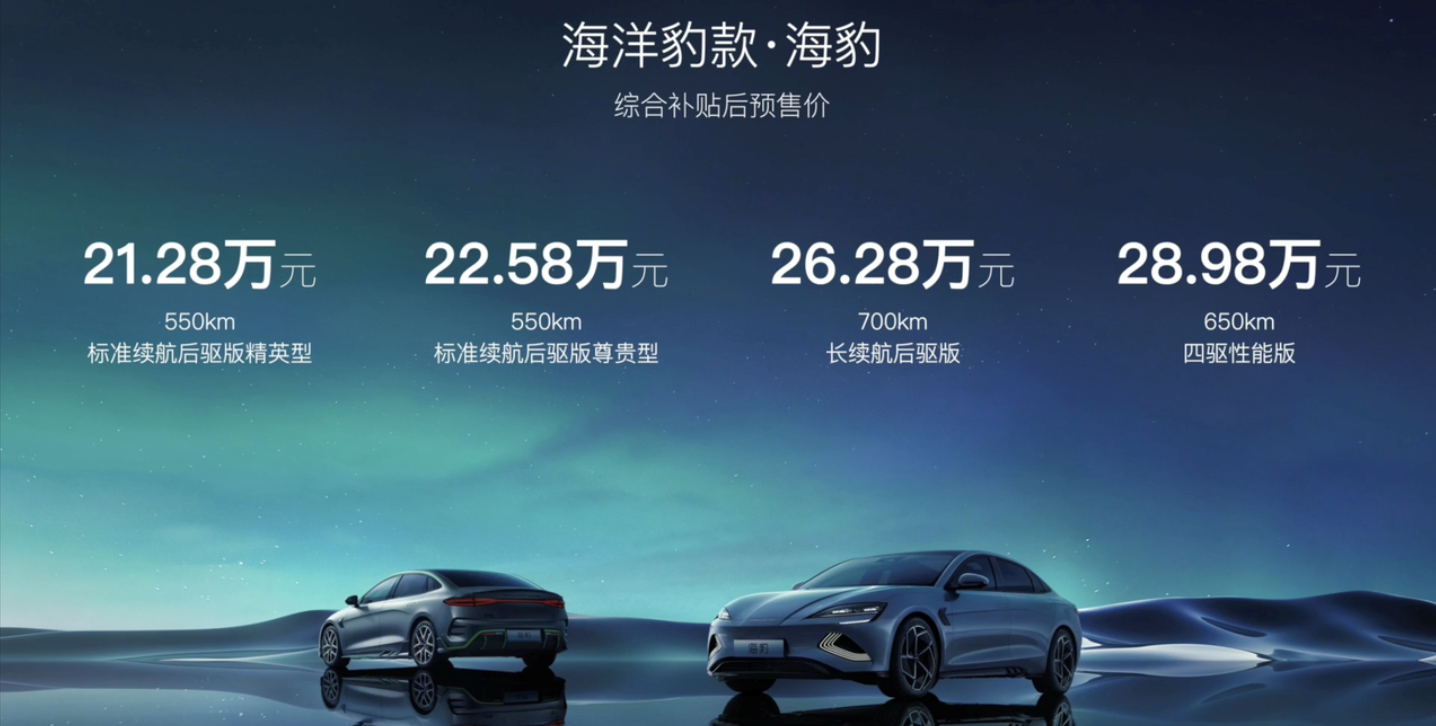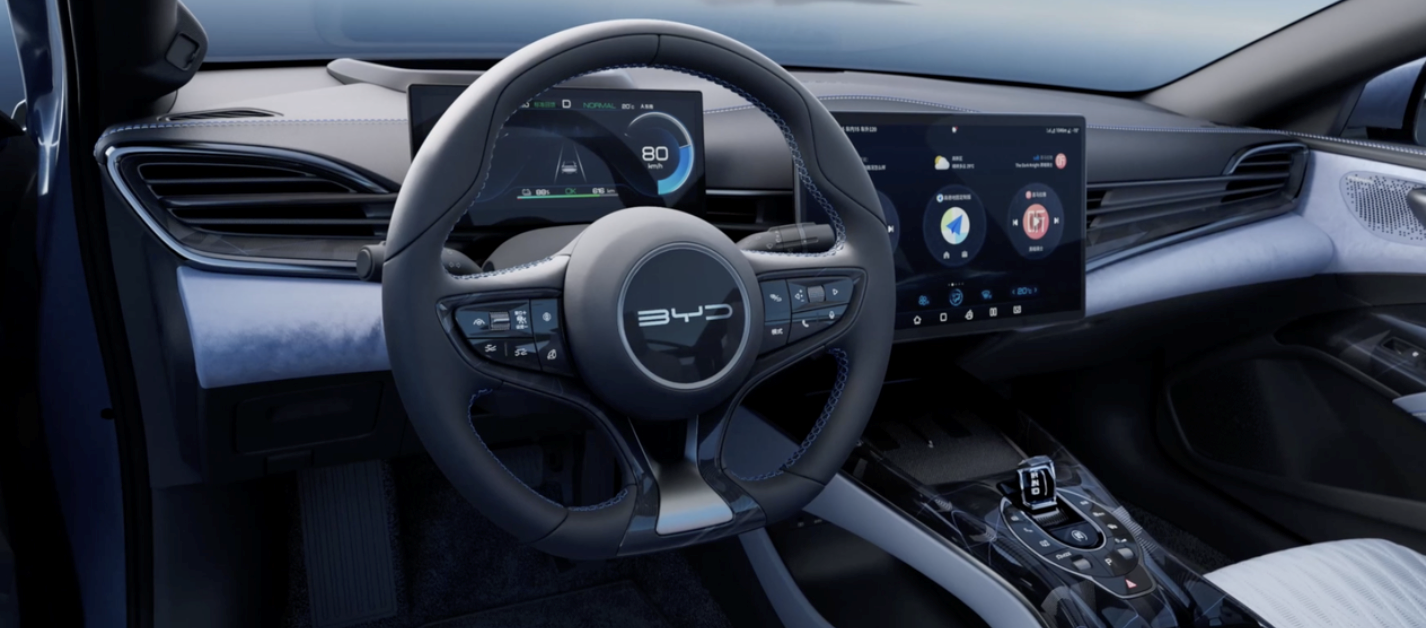Jia Haonan, posted from the co-pilot temple
Reference for intelligent cars | AI4Auto WeChat Official Account
BYD’s new car “Sea Lion” has just been launched:
This car, the Sea Lion, is different from all the BYDs you’ve seen on the road before, and it’s a car that’s been a topic of discussion:
This is the first mass-produced medium-to-large size car on the BYD e-platform 3.0, and it’s also BYD’s latest attempt to reach the high-end market.
The Sea Lion is also a concentrated display of all of BYD’s latest advanced technologies accumulated in new energy vehicles.
With new forces encircling, the pressure is on the Sea Lion to maintain BYD’s position as the leader in new energy vehicles.
The biggest controversy is that the Sea Lion disappointed everyone’s expectations before it even went on sale. Internet users hoped that the Sea Lion would be a price butcher, costing less than 200,000 yuan but fully loaded. Instead, they found that it was a mid-to-high-end model with a starting price of over 210,000 yuan and a top-of-the-line price of 290,000 yuan.
There was a lot of satire, regret, and even abusive language.
The core question is simple:
Is it worth 290,000 yuan to buy a BYD Sea Lion?
What kind of car is the Sea Lion?
The model, price, and range are all clear, but what kind of car is the Sea Lion?
Electric, Dynamic, Car.
It seems like nonsense, but it’s not.
On this car, the Sea Lion, BYD has accumulated all of its most advanced technologies in electric control, batteries, and electric drives, and has taken full advantage of the benefits of “electric drive”. All of the other official selling points, whether it’s space, power, handling, or safety, come from “electric drive”.
Specifically, it’s the CTB battery chassis integration technology.
Battery-chassis integration technology is talked about by everyone, but BYD’s difference is the use of self-developed blade batteries instead of cylindrical batteries. In addition to BYD’s emphasis on the safety feature that blade batteries are puncture-resistant, the rectangular blade batteries have no gaps in the middle when closely arranged, which improves the utilization of the battery pack space and to a certain extent makes up for the low energy density of lithium iron phosphate batteries.
Moreover, unlike Tesla, which “embeds” the battery cells in the chassis, CTB has the battery pack top layer sealed as the car floor and installed directly on the frame as part of the chassis.
Why do we do this? BYD explains from these few aspects.
Firstly, it’s about spatial layout. As the battery pack serves as the chassis, it can provide about 1cm more height for the passenger cabin vertically, and more flexible space for the motor, air conditioning, and other systems horizontally, making the components of the whole vehicle more compact and centralized.
This is why the Han EV has the same interior space performance as a mid-size car with a 2920mm wheelbase despite being only 4800mm long.
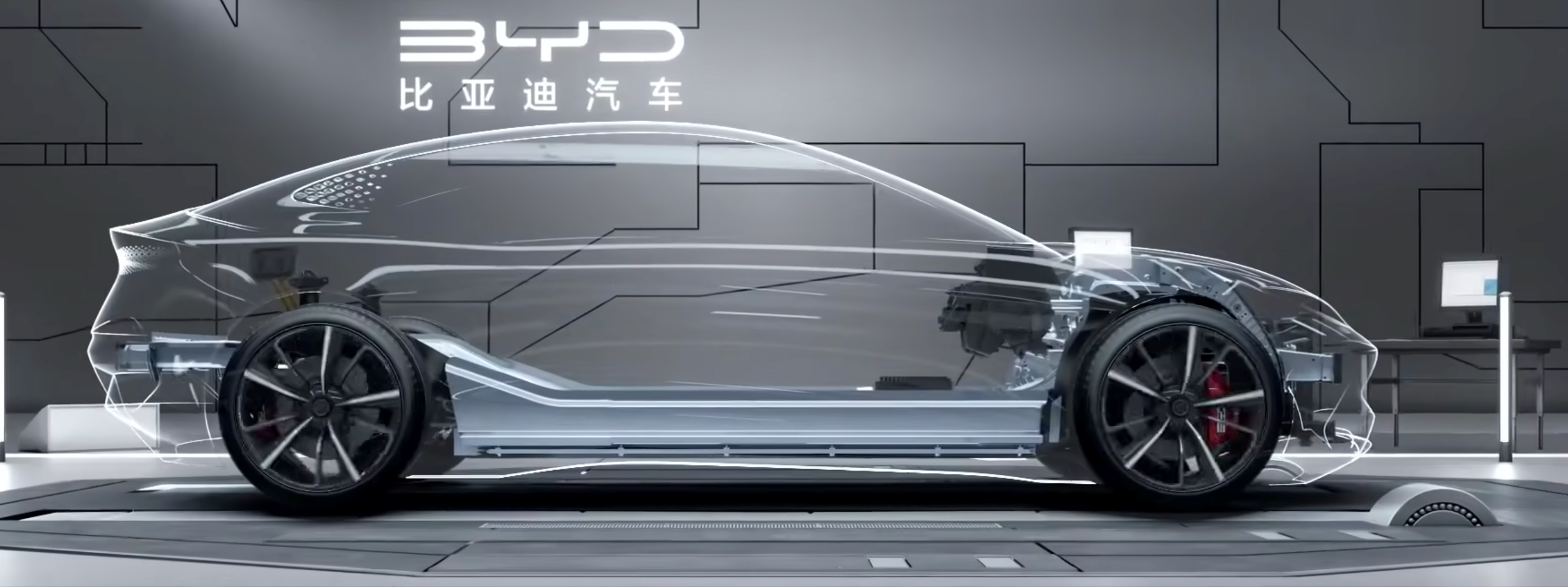
By comparison, the same-level petrol Honda Accord is 4906mm long with a 2830mm wheelbase.
Therefore, this is also one of the innate defects of oil-electricity conversion models and pure electric platforms.
In addition, unlike the inlaying CTC technology, BYD CTB allows the entire battery pack to uniformly participate in the transmission force and become part of the chassis structure, greatly enhancing the overall vehicle’s strength and rigidity.
The Han EV’s chassis torsional stiffness exceeds 40,000 N·m/°, a number that is generally found in million-dollar luxury cars with petrol engines.
At this point, you may have a question. As a structural component, will the battery itself catch fire if it is impacted?
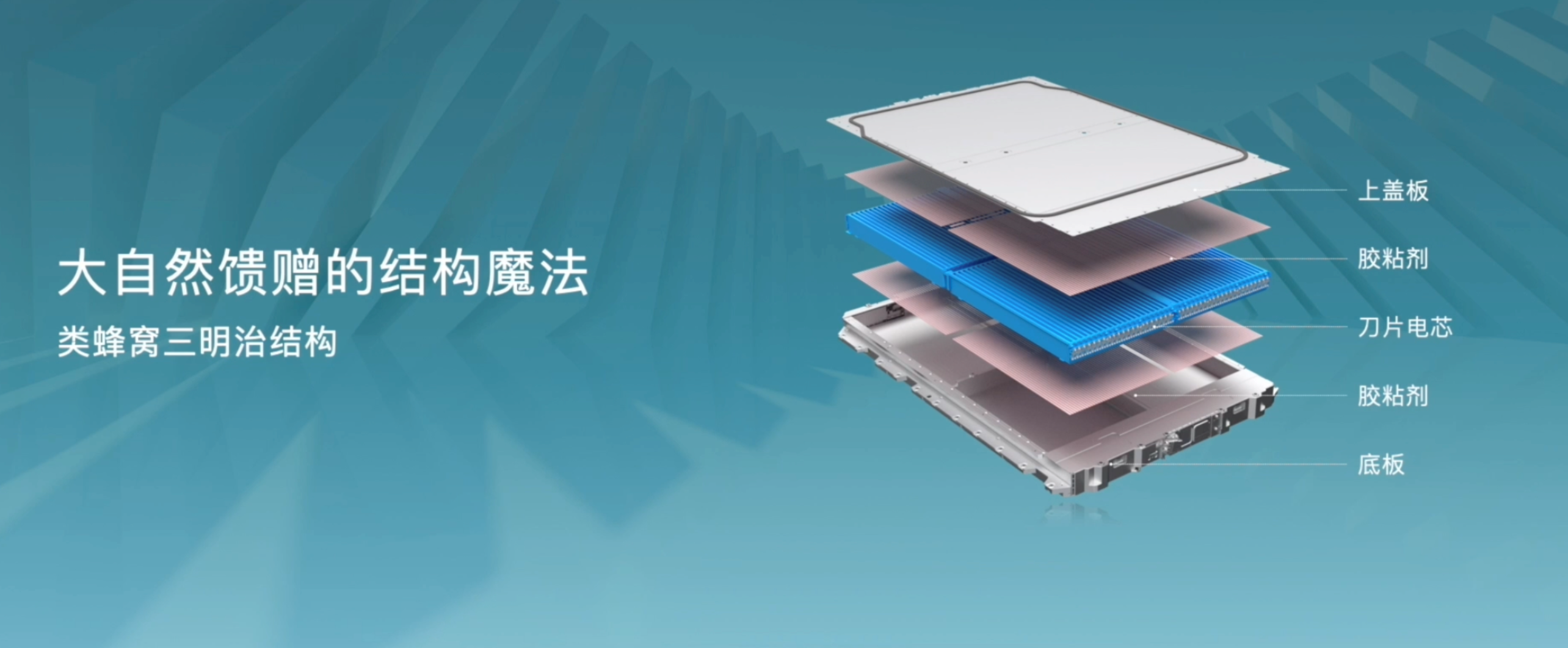
BYD’s solution is to enclose the battery pack in honeycomb aluminum structure similar to the structure of the aircraft, which mimics the hexagonal structure of the honeycomb to ensure strength. BYD’s test data show that the CTB chassis of the Han EV can reduce the lateral collapse distance by 45% in case of a side collision, earning it the title of “unbreakable electric vehicle.”
Previously, in order to prove that the blade battery does not catch fire or explode, BYD seized every opportunity to demonstrate the stab test, almost turning it into a business card.
To prove the safety of CTB this time, BYD came up with a new stunt, allowing a truck weighing 50 tons to crush the CTB battery pack, which didn’t deform, catch fire, or leak. Even when reinstalled on the Han EV, it can still function normally.
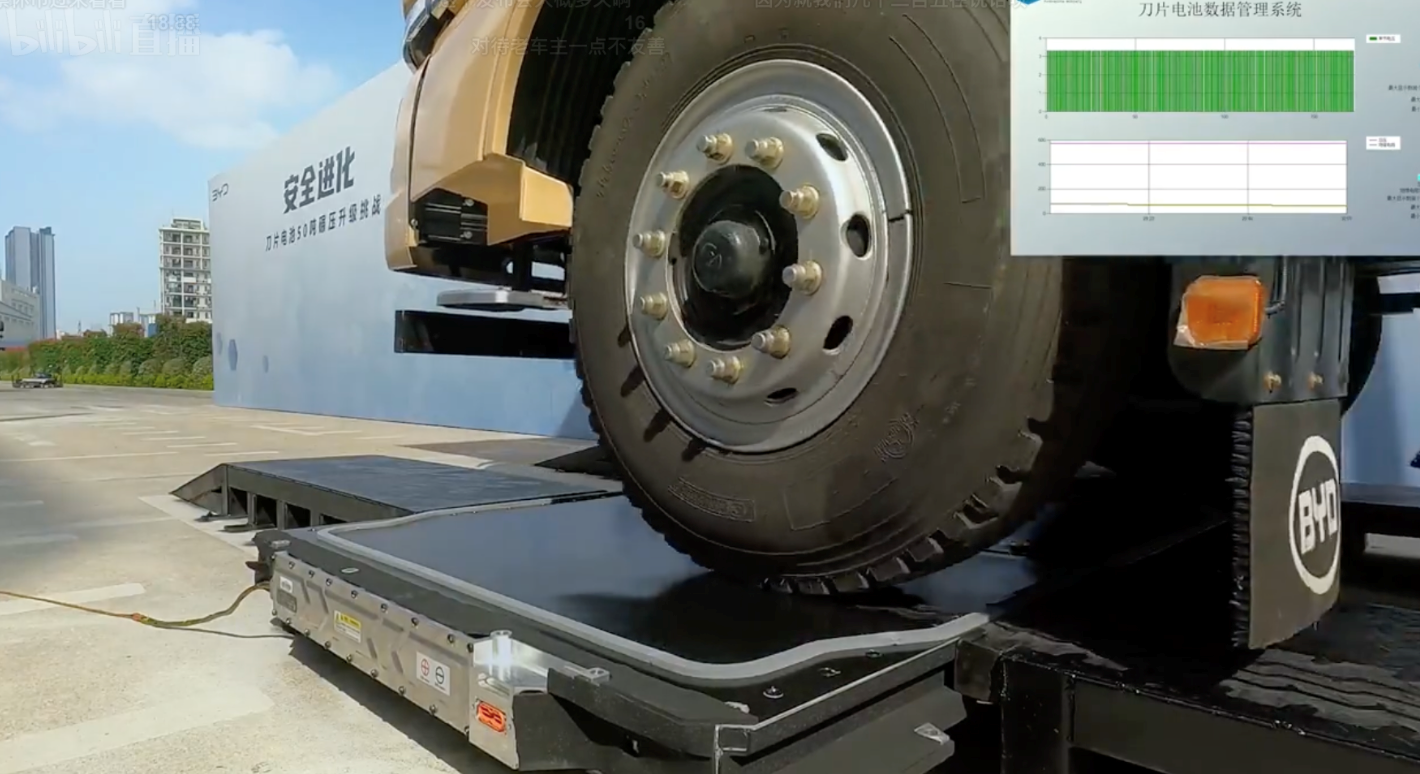
Whether a 50-ton crush test is rigorous enough is still under discussion, but the safety advantages of the integrated chassis are unattainable for a regular oil-to-electricity conversion.
In addition, CTB also has a major advantage that previous EVs and petrol cars could hardly match, which is a lower overall vehicle center of gravity and perfect load distribution of 50% on the front and rear axles.
If you are a performance car enthusiast or player, you will understand the implications of these two characteristics immediately.Yes, it’s about better control.

From the official performance scores, the Sea Lion has reached the level of a typical sports car. However, when it comes to actual racing, it will be a test of comprehensive adjustments in areas such as steering, suspension, and body response, which BYD has yet to prove itself in.
In addition, the CTB battery makes the Sea Lion’s body lower, bringing lower wind resistance and a more streamlined design, resulting in reduced power consumption. The official reference given is 12.7 degrees per 100 kilometers for the four-wheel-drive version, which is much lower than most two-wheel-drive electric vehicles currently on the market.
CTB is not independent, but a technology under BYD’s e-platform 3.0. Previously, we introduced the main advantages of BYD’s e-platform 3.0. In addition to the advantages that the battery itself brings to the vehicle, there are many other highlights.
Another feature that can be seen in the Sea Lion is the wide-temperature-range heat pump air conditioner. Its function is to exchange heat with the environment within a certain range to regulate the temperature and reduce power consumption, thus ensuring maximum driving range.
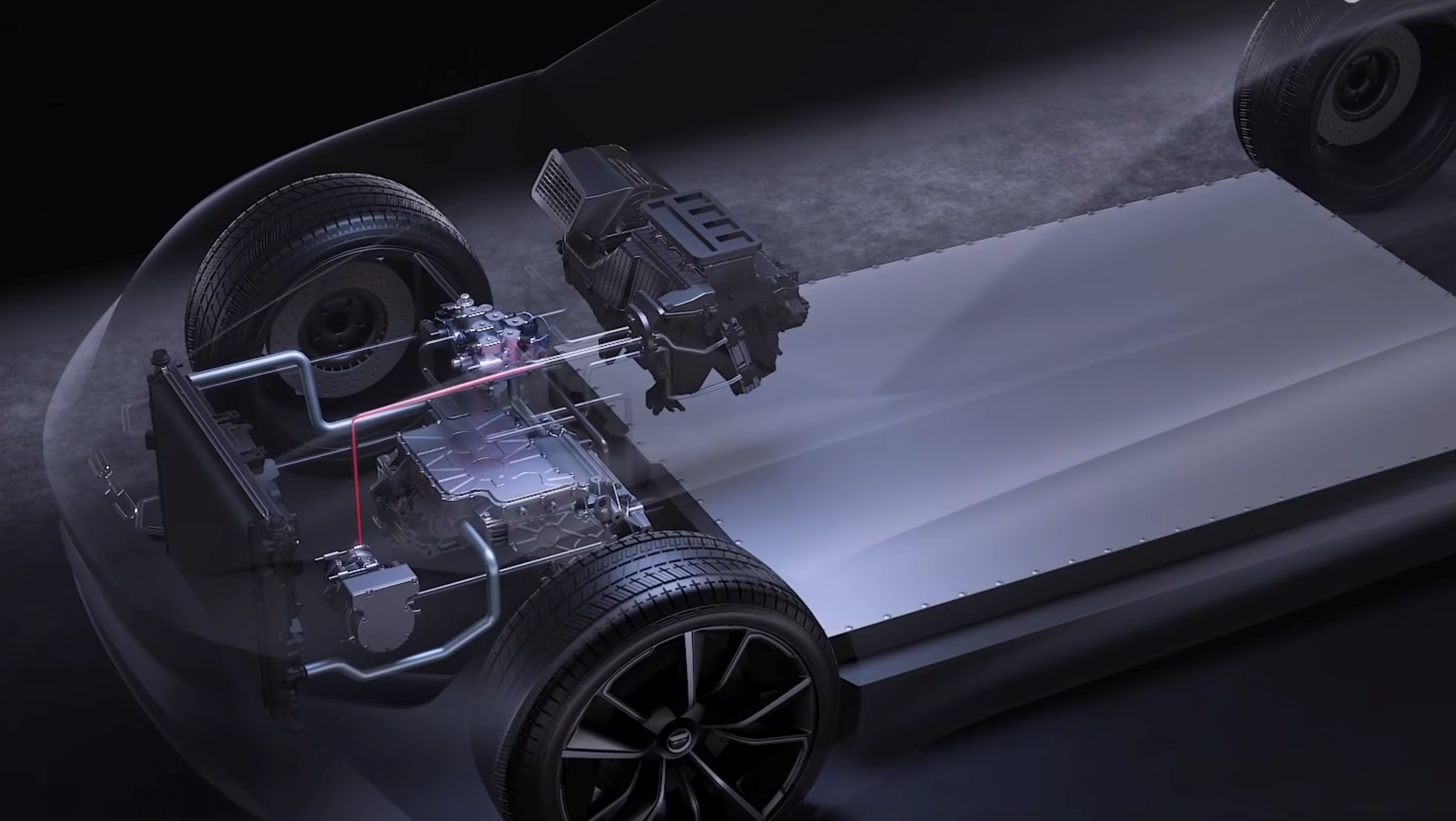
This has already been verified by third-party test results. In the Dongche Test’s winter test, the Sea Lion, BYD’s first vehicle under the e-platform 3.0, with a lithium iron phosphate battery that is not as competitive, defeated numerous competitors with a higher level of ternary lithium battery.
In addition, the Sea Lion can also be equipped with an 8-in-1 electric drive system, and the four-wheel-drive version can accelerate from zero to 100 km/h in 3.8 seconds. It also has BYD’s self-developed high-voltage fast charging system, which is compatible with various public charging stations with voltages ranging from 300V-750V, with a peak power of 150 kW and a charging time of 15 minutes for a 300 km range.
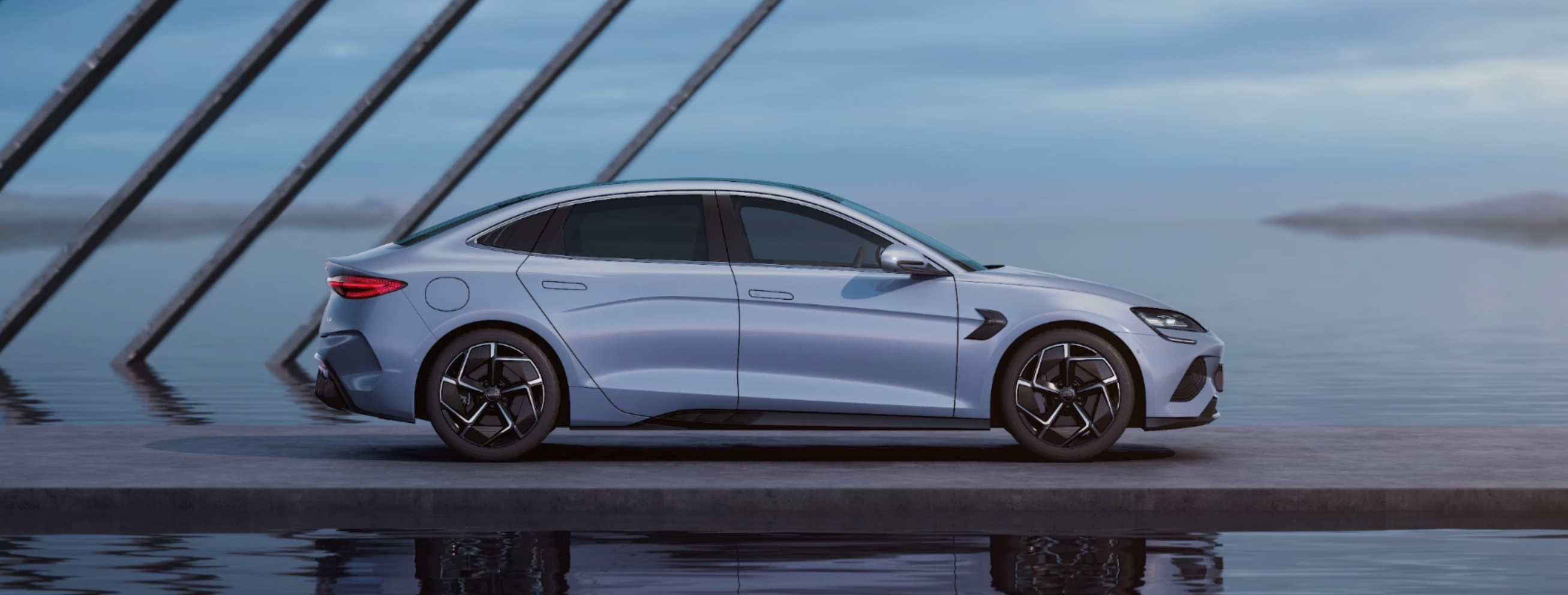
In summary, as the first large-scale vehicle under the e3.0 platform, the Sea Lion’s three-electric technology is unprecedented. Whether compared to electric vehicles currently available on the market or BYD’s previous models, the Sea Lion is more thorough and radical in both on-paper data and the application of new technology.
However, during the e3.0 platform launch, Wang Chuanfu explicitly stated that the electric vehicle race has ended, and the theme of the next half of the game is intelligentization. Intelligence is also a key focus of the e3.0 platform, so is the Sea Lion smart enough, considering that it has taken the “electric” aspect to the extreme?
Has the Sea Lion made up for the lesson in intelligence?
If you are looking for a smart car buying experience, then the Sea Lion may not give you too many surprises.BYD is a specialist in electric vehicles, and their skills related to software and algorithms, such as intelligent driving and intelligent cabins, have not been their strong suit.
At the Sea Lion press conference, the company only talked about the CTB battery and did not mention anything about intelligence.
But it’s not that the Sea Lion isn’t intelligent, it’s just that the new features of intelligence are not so prominent.
DiPilot, their intelligent driving system, is exactly the same as the one on the new Han EV. DiPilot software is divided into two parts:DiDAS for functional aspects, and DiTrainer for learning user driving behaviors.
DiDAS does not have advanced driving assistance functionality like autonomous navigation in cities and on highways, but it still includes basic Level 2 features, such as cruise control, lane keep assist, and low-speed automatic following.
The Sea Lion supports autonomous parking, but does not have higher-level capabilities such as memory parking or the ability for the vehicle to call itself while parked.
As for the DiTrainer, it can be understood as a small neural network that relies on on-board edge computing. It learns the user’s driving habits and provides driving recommendations based on the current road conditions, such as reminding the user to be cautious when driving in bad weather conditions.
Regarding the hardware, BYD has not disclosed specific configurations, but the new Han EV can serve as a reference:
-
3 high-precision millimeter-wave radars
-
4 automatic parking cameras
-
5 driving cameras
-
12 ultrasonic radars
The computing platform has not been disclosed, but judging from the previous cooperation and signing information, NVIDIA Xavier, with a maximum power of 30 TOPS per chip, is likely to be used.
DiPilot’s development goal is clearly Level 2 assisted driving.
In terms of the intelligent cabin, BYD uses a relatively old Qualcomm 690 chip, but it has independently developed the DiLink system based on the Android kernel. DiLink includes an application interface for direct user interaction and acts as the vehicle’s OS connecting software and hardware layers.Only from user feedback, the current car system and voice interaction are not user-friendly, with inaccurate recognition and occasional delays.
As of 2022, this level of intelligence is passable but not outstanding.
Regardless of whether it is user-friendly or not, BYD has already surpassed most traditional automakers in terms of self-developed in-car operating systems.
This also demonstrates that while BYD is focused on practicing battery technology, it still keeps a watchful eye on the wave of intelligent transformation.
Although not capable of developing the full stack technology of intelligent vehicles like new forces, BYD has nevertheless developed its own pure electric architecture and operating system.
By mastering the underlying architecture, BYD can maintain its own distinctive style while working with autonomous driving companies. For example, the E-platform 3.0 not only includes hardware innovations in batteries and bodywork but also a centralized domain controller for electrical and electronic architecture equivalent to the nervous system and skeleton that support intelligent vehicles.
This is also reflected in the Haibao vehicle.
Although the current level of intelligent driving is not outstanding, a few days ago BYD released news that the Haibao model had applied for a patent for a lidar cover, which indicates that future versions will incorporate a higher level of intelligent driving system.
This product strategy, derived from the intelligence and scalability of the E-platform 3.0, demonstrates BYD’s preparation for the fierce intelligence revolution.
In the second half of the year, we will see a series of new vehicle collaborations between BYD and its star auto-driving partners like Baidu Apollo, Momenta, etc. The rumor is that these intelligent cars all aim to research and develop high-level intelligent driving capabilities.
Returning to the Haibao vehicle, which encapsulates decades of black technology from BYD and took electric mobility to an extreme high standard, it has indeed improved in terms of intelligence although still lagging behind.
Finally, let’s take a look at who the Haibao’s direct competitors might be. We have compiled a table for your reference:
As for its price of 210,000 to 290,000 RMB, please share your thoughts in the comments.
— End —
This article is a translation by ChatGPT of a Chinese report from 42HOW. If you have any questions about it, please email bd@42how.com.
